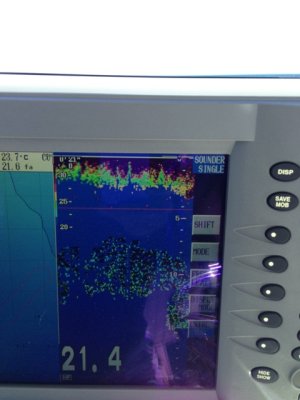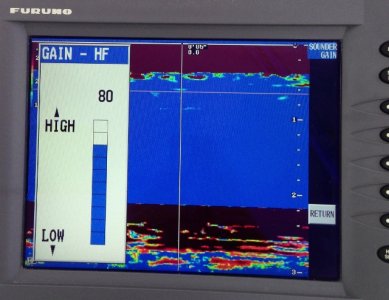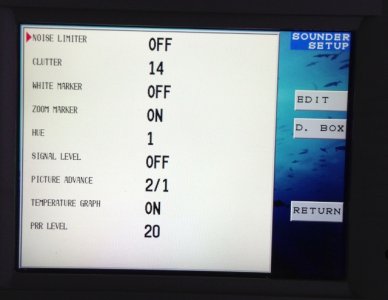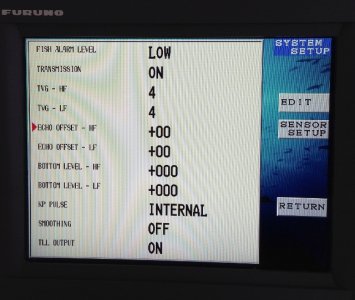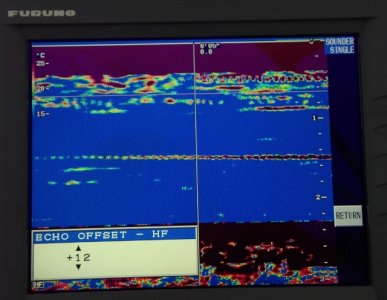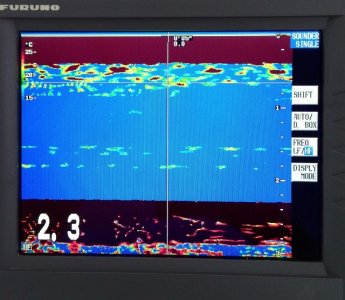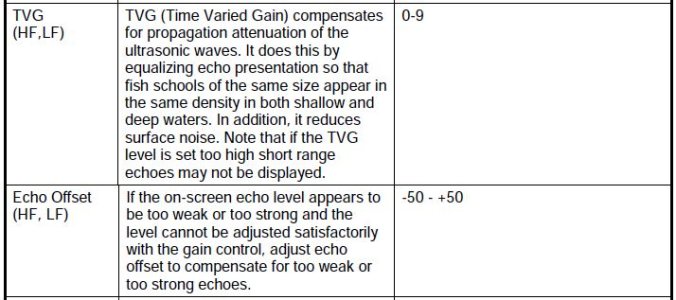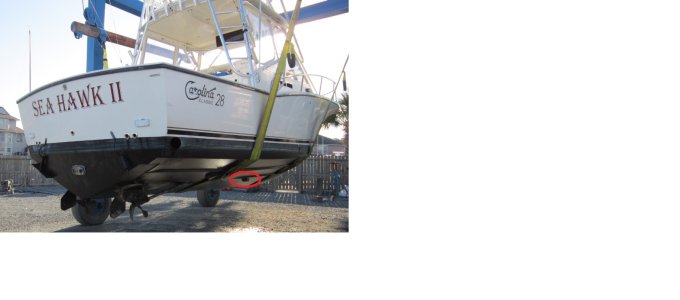I was wondering if you good people could give me some help/guidance with a couple of issues I am having with a boat, newly fitted, with a pair of SS264 transducers and a pair of Navnet VX2 units.
The setup was replacing older Navnet 1 Units and 600w Transducers.
The Boat has an ETR 6/10N sounder module, A Furuno Autopilot and FurunoRadar.
I have used the setup for a few months now and initially I wasnt very impressed with the performance until I was told to check that the Sounder module was switched over to 1kw rather than 600w.
It wasnt, and I opened the box and made the switch and the performace improved slightly.(hopefully I did it correctly)
My issue is with the correct setup of the transducers coupled with the Navnet VX2 units.
The setup does not seem to mark up individual fish (marlin/tuna), bait is showing up but I cant make out larger fish or really dont know what they will look like on these screens.
Typical water depths we fish in are between 40 - 200 meters. We look for bait and/or individual marlin/tuna around the bait.
In hindsight I should have gone for the newer Navnet 3D screens but I thought I would hold out until the newer models were released and tested in the field as I wasnt overly impressed with the performance of the Navnet 3D units on another boat.
Another issue I am having is with the colours on the screens. Both units, in the cockpit and the bridge, are set up exactly the same and yet the lower unit will mark up bait in red and the uper in black.
Over the last weekend whilst using the boat offshore I noticed that the GAIN I can use in the LF is basically Zero before the screen is filled with clutter. The HF is better but then I cant get it over 50%.
More than likely this is a setup issue as I have used a 585 before and didnt have the same probem.
Any ideas?
Any help or information would be greately appreciated.
Keep Smiling
Leon
The setup was replacing older Navnet 1 Units and 600w Transducers.
The Boat has an ETR 6/10N sounder module, A Furuno Autopilot and FurunoRadar.
I have used the setup for a few months now and initially I wasnt very impressed with the performance until I was told to check that the Sounder module was switched over to 1kw rather than 600w.
It wasnt, and I opened the box and made the switch and the performace improved slightly.(hopefully I did it correctly)
My issue is with the correct setup of the transducers coupled with the Navnet VX2 units.
The setup does not seem to mark up individual fish (marlin/tuna), bait is showing up but I cant make out larger fish or really dont know what they will look like on these screens.
Typical water depths we fish in are between 40 - 200 meters. We look for bait and/or individual marlin/tuna around the bait.
In hindsight I should have gone for the newer Navnet 3D screens but I thought I would hold out until the newer models were released and tested in the field as I wasnt overly impressed with the performance of the Navnet 3D units on another boat.
Another issue I am having is with the colours on the screens. Both units, in the cockpit and the bridge, are set up exactly the same and yet the lower unit will mark up bait in red and the uper in black.
Over the last weekend whilst using the boat offshore I noticed that the GAIN I can use in the LF is basically Zero before the screen is filled with clutter. The HF is better but then I cant get it over 50%.
More than likely this is a setup issue as I have used a 585 before and didnt have the same probem.
Any ideas?
Any help or information would be greately appreciated.
Keep Smiling
Leon



